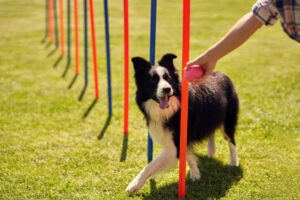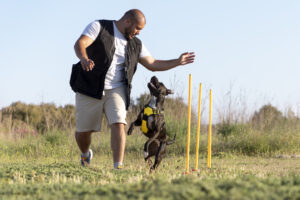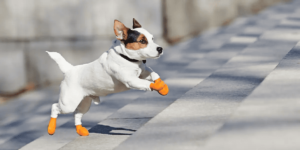Dog facial expressions can tell us a lot about their feelings and moods. We all know how happy they look when we come home, but did you know that dog expressions can also indicate when they’re feeling anxiety, fear, or even aggression?
Let’s look at some of the common dog facial expressions and what we can learn from them.
Dog Facial Expressions and What they Mean
There is no question that each dog has a distinct personality. Every dog is unique, but most will make an effort to communicate their emotions through a variety of facial expressions. Dogs, like people, can make hilarious expressions.
That said, how do you know if your pup trying to tell you something? Here’s a comprehensive list of canine facial expressions and what they could mean.
Eye Contact
A dog’s eyes and eyebrows can be telltale indicators of emotional states. According to a University of Portsmouth study, dogs evolved to display more expressive facial muscles around their eyes in order to better connect with humans.
When attempting to understand a dog’s facial expressions, paying attention to the eyes is essential. The gaze of a pup can be an indicator of whether they are feeling calm or aggravated; loose eyelids and squinting suggest that the canine is content at this moment, while hard eyes indicate hostility brewing beneath the surface.
On the other hand, if you notice any whites visible around their pupils or irises—even just slightly—it could mean they feel uneasy in their current situation.
Eyebrow-Raising
When your dog lifts one or both eyebrows while making eye contact, it indicates attentiveness and curiosity.
Dogs may also open their eyes wide and arch both eyebrows when startled, just like how you would be if you heard someone sneeze unexpectedly. It is also a sign of anticipation and excitement, usually seen when they’re expecting something good (like treats).
Mouth and Ears
Dogs with their ears pulled back and tongues slightly exposed are usually feeling at ease. On the other hand, when they feel unsure about something, they may have one or two eyebrows lifted.
Head Tilting
When your dog has its ears perked up and is totally listening to you, it likely means that you’ve said something truly tantalizing—like “treat” or their name. In some cases, it’s simply because of curious noises, and they want to figure out what’s making them.
However, if they’re constantly tilting their head, you may want to have them checked out. Expressions and behaviors like this can be due to underlying medical conditions such as ear infections or even a toxic response from certain drugs.
Bowing The Head
When dogs are uncertain of a person’s response toward them, they automatically lower their heads. This is especially true if they’re particularly submissive, timid, or scared.
Additionally, when two dogs come face to face in an assertive manner, and one wants peace instead of conflict, it will bow its head as a sign of submission to demonstrate that it no longer wishes to fight.
Smiling
Also known as a “submissive grin,” dogs usually smile when they’re feeling happy, content, and relaxed. It’s also their way of letting us know that they’re nothing but friendly.
Scientists say that this is a result of the human-canine connection and genetic domestication over time. We’ve developed to recognize the traits of a dog’s face, and they’ve evolved to have distinguishing features and the capacity to grin.
Conclusion
By now, you should have a basic understanding of dog facial expressions and how to interpret them. Of course, reading dog facial expressions is not a perfect science, but you can get better at it with practice.
For more information on dog facial expressions and dog behavior in general, be sure to check out the PetFitness blog!







